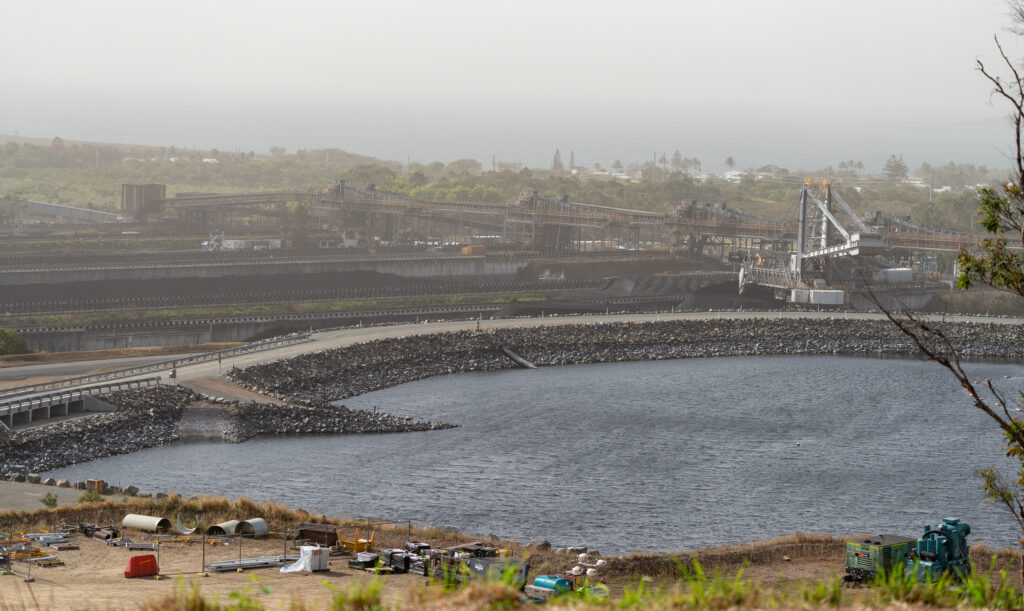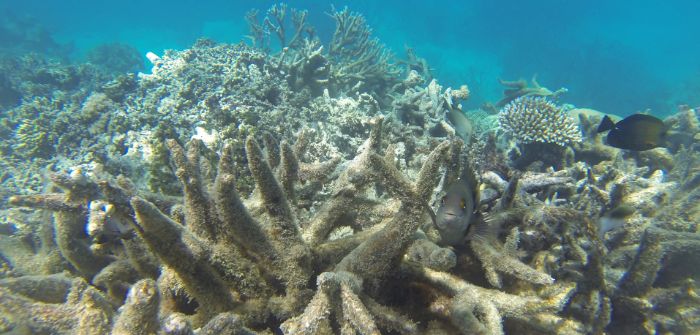Australia is the fifth-largest user of shipping services in the world, with 10% of global sea trade passing through its ports. Yet it’s universally recognized that the country lags behind in cutting emissions, particularly in the marine sector. E&H Marine looks at how the nation’s shipping industry intends to clean up its act.
Hay Point, on Australia’s Queensland coast, is where two completely different worlds collide. Out to sea are the 1,400 miles of the Great Barrier Reef, the largest coral reef system on the planet. And dominating the coast are two gargantuan coal terminals, Hay Point and Dalrymple Bay.
This is the frontline in Australia’s battle between heavy industry and environmentalism. The Great Barrier Reef is being devastated by mass coral death caused by global warming. Hay Point is where thousands of coal ships dock every year, collecting their fossil fuel from Australian mines and transporting it all over the world.
As this nation’s huge coal industry continues to grow, even more coal ships are arriving. In June last year the Australian government gave the green light to the new Carmichael Mine, northwest of Hay Point, which is expected to be the largest coal mine in Australia and potentially one of the largest in the world.
Australia’s prime minister, Scott Morrison, is more than a little keen on fossil fuel. He has consistently championed the production of more coal and natural gas. This is, after all, the man who in 2017, when he was a government minister, carried a lump of coal into the Australian parliament and admonished his critics with the words, “This is coal, don’t be afraid.”
Many Australians, however, are afraid. The thousands of coal ships passing through the area are just the tip of the iceberg. According to the latest figures from the International Council on Clean Transportation (ICCT), Australian companies operate 4,782 sea vessels with a gross tonnage of 1.79 million metric tons, traveling overall distances of 5.2 million nautical miles every year and emitting just under 2.48 million metric
tons of carbon dioxide. (The council will be producing a more up-to-date report on ship emissions later this year.)
Australia is not the worst culprit. Chinese ships, for example, emit over 106 million metric tons of carbon dioxide. And many ships sailing under flags of convenience are vast emitters, too. Panama, Liberia and the Marshall Islands, for example, emit 138 million, 85 million and 65 million metric tons of carbon dioxide respectively. In total, global shipping is responsible for nearly one billion metric tons of carbon dioxide every year.
 According to Bryan Comer (pictured), a senior researcher in the ICCT’s Marine Program in Washington DC, flags of convenience mask the true extent of Australia’s carbon dioxide emissions. “Ships can pay to fly any flag,” he says. “So, Australian-owned or operated ships could be sailing to and from Australia using all sorts of ships flying all sorts of flags.”
According to Bryan Comer (pictured), a senior researcher in the ICCT’s Marine Program in Washington DC, flags of convenience mask the true extent of Australia’s carbon dioxide emissions. “Ships can pay to fly any flag,” he says. “So, Australian-owned or operated ships could be sailing to and from Australia using all sorts of ships flying all sorts of flags.”
Debunking myths
In an attempt to clean up the emissions from commercial ships, the International Maritime Organization has brought in new regulations. From January 1 this year, under the MARPOL treaty, the IMO 2020 regulation has limited the levels of sulfur in ships’ fuel oil to a maximum of 0.5%. From March 1, an additional regulation banned ships from even carrying non-compliant fuel oil, unless the ship has an approved exhaust gas-cleaning system (scrubber) fitted.
“This will significantly reduce the amount of sulfur oxides emanating from ships,” said the IMO, “and should have major health and environmental benefits for the world, particularly for populations living close to ports and coasts.”
In certain ocean waters, the IMO has imposed an even stricter sulfur limit of just 0.1%. This applies to the Baltic Sea, the North Sea, coastal areas off the USA and Canada, and USA-controlled sections of the Caribbean. But crucially it does not apply to Australian waters. Angela Gillham, deputy CEO of Maritime Industry Australia, a members’ association for the Australian shipping industry, says that the IMO 2020 regulations have challenged shipping companies operating in Australian waters.
“There have been a large number of uncertainties,” she says. “Prior to implementation, the lack of clarity in
relation to fuel price proved to be a fairly uncomfortable position. However, all things considered, I think the industry has done a great job of adapting to this change.”
She explains how most operators had started testing fuel types and engine systems well before the regulation was imposed. “This meant they were well prepared and had a good grasp of the fuel properties, and alterations required for machinery systems.”
But she points out that the regulations on port state control (the inspection of foreign ships in Australian ports) are still unclear. One area that could cause major problems is if ships unwittingly take on fuel that fails to comply with the regulations.
“For example, where the bunker delivery note claims the fuel is compliant, but subsequent testing by the ship demonstrates it isn’t,” Gillham explains.
Another problem area could be with the Fuel Oil Non-Availability Report form, or FONAR, as it is known. This is the form that ship operators are required to complete when, despite their best efforts, they are unable to purchase compliant fuel oil. Gillham also worries that Australia’s ports fail to offer enough fuel de-bunkering facilities, and this could result in vessels being forced to carry non-compliant fuel and unavoidably contravening the regulations.
Vote green
The next challenge for the shipping industry is the IMO’s stated intention to halve the greenhouse gas emissions of international shipping by 50% by 2050 compared with 2008 levels.
Gillham concedes that this is no easy task. “This will certainly require accelerated development of very low and zero-carbon fuels for use in the shipping industry,” she says. “To produce these fuels at the scale
that is required, various governments, including the Australian government, must create the policy environment to direct the required investment.”
Both environmentalists and shipping companies hope technology might come to the rescue (see Tech saviors, right), although it is unlikely to be adopted voluntarily by the industry due to the extra costs involved. Comer points out how national governments and international bodies such as the IMO will have to force shipping companies to transition to zero-emission vessels through regulation.
Ultimately it will be the Australian public that shapes the future of this country’s shipping industry. They have seen how the Great Barrier Reef is dying and they’ve just witnessed one of the most severe bushfire seasons in the nation’s history.
Suddenly, Prime Minister Scott Morrison’s attitude toward fossil fuel looks very out of step with that of many of his compatriots. According to a poll carried out in November last year by Australian research company Essential, 60% of Australians believe their nation is not doing enough to reduce the risks of climate change.
If Morrison wants to fare well when Australians next go to the ballot box (probably 2022), he will surely need to appease voters’ fear of global warming. And shipping fuel is a major contributing factor to the problem.
Meanwhile, back at Hay Point, the coal ships continue arriving at the terminals. Gazing out from the coast at busy times you can see these vessels making their way through the Great Barrier Reef.
Though their sulfur emissions may be vastly reduced, the cargo they are carrying is still very dirty.
By Dominic Bliss




